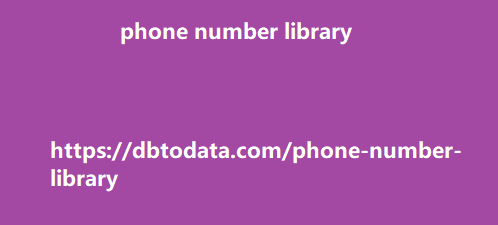In the diagram, Google shows that spam can already be identified during the crawling and indexing process. This way, they are already able to filter it so it won’t appear in the search results. According to Google, this automated system allowed them to maintain 99% of organic visits completely spam-free. spam, these are usually low-quality pages that are either automatically generated or may be scraped from other websites. However, there are worse types of spam, or what Google calls “scammy websites”, where it may affect users’ financials, privacy, and personal life. These scams are all around the internet and unknowing users are vulnerable to these scams because they make their websites look legitimate.
According to Google, they were able to mak
e significant progress in detecting these online scams. One example that they used is a scam called “customer support scam” or “tech support scam” where scammers pretend to be representatives of a company then trick people seeking help into giving them credit card details and more.Was there ever a time where you click on a website then right before you are able to scroll for the content that you need or select the product you want to purchase, there’s this big pesky pop-up that suddenly blocks your entire screen. Annoying right? We’ve all been there at least once and if it’s annoying to us SEOs and website owners, you can be sure that’s annoying to any other user as well.
These pop-ups are called Intrusive
Interstitials and they may be the reason why your website is not reaching it’s full ranking potential. Intrusive interstitials are one of the signals included in Google’s Page Experience update. It might be new for those who just started in SEO but intrusive interstitials is actually something Google has been looking at for years already and it might be pulling down your rankings unknowingly. In this post, I’ll dive deeper into intrusive interstitials to not just to help you prepare for the upcoming page experience update but also to improve your website’s overall UX and avoid any negative effects of these on your rankings. What are intrusive interstitials? Intrusive interstitials are similar to how pop-up ads work but the difference is, they block most, if not all, content of a single webpage whether it’s immediately after a user enters from the search results or a different page or triggered by an action of a user on the page .
It is a type of interruption marketing which can
get higher click through rates but can also annoy users a lot. Uses of interstitials may vary. It can be for newsletters, push notifications, ads, surveys, contact forms, and leads. There are times that they are beneficial to users but more often than not, it ruins the user experience on a website. How do intrusive interstitials affect SEO? If you have intrusive interstitials on your website, it might be pulling down your rankings more than you expect. To give a little bit of a background, let’s go back to 2014 when Google started labeling websites as “mobile-friendly” in the search results. Because of the continuous rise of mobile searches that started overtaking desktop searches in some countries that time, Google wanted to make sure websites prioritize having optimized versions for mobile phones.
In August 2016, Google published an article
about helping users easily access content belarus phone number library on mobile and in January 2017, they updated this post announcing that pages where content is not easily accessible to users will be ranked lower. This specifically targeted intrusive interstitials on mobile where there is a lot less space to work. Nothing was said about interstitials on desktop but we can safely assume that there is also a penalty for them but not as painful as in mobile. According to Google, here are examples of situations where interstitials are deemed intrusive and makes it difficult for users to access content: Interstitials that obstructs users from seeing the main content of the page or the content that they expected to see coming from the search results or while scrolling through the page Redirecting users to a standalone interstitial that users have no options but to see before seeing the content of the page.
Interstitials that don’t exactly block the content
but appear at the above-the-fold portion of a page pushing down the main content for users to see. It is also important to note that having intrusive interstitials does not mean that your webpage will not rank at all, it may just not rank as high. Pages with intrusive interstitials however can still rank at the top if Google finds the content greatly relevant to users. You shouldn’t also worry about intrusive interstitials pulling down rankings of your whole website. It will most likely only affect pages that have the interstitial so unless it’s applied sitewide, then you won’t be in too much trouble. When are interstitials acceptable? Yes, Google is cracking down more on intrusive interstitials especially when the Page Experience update comes but there are still some instances when interstitials are considered acceptable by Google.
Meaning there will be no repercussions if you
add them to your website. Here are enables computing resources to be Google’s examples: Interstitials that appear to be in response to a legal obligation, such as for cookie usage or for age verification. Login dialogs on sites where content is not publicly indexable. For example, this would include private content such as email or unindexable content that is behind a paywall. Banners that use a reasonable amount of screen space and are easily dismissible. For example, the app install banners provided by Safari and Chrome are examples of banners that use a reasonable amount of screen space. If you’re using interstitials that were mentioned above, you don’t have to worry about being penalized as Google is smart enough to understand the purpose of interstitials in each webpage.
Tips on using intrusive interstitials without
being penalized With all these restrictions taiwan data in using intrusive interstitials, it’s pretty easy to say that all websites should just stop using them at all. But if we look at Google’s third example of interstitials that are acceptable, we could safely assume that as long as you use interstitials responsibly, there will be no penalty for it. Here are some tips in using interstitials properly:Does changing a URL impact SEO? Quick Answer: Yes, it does. T errors, broken links, and lost links — all of which negatively impact your SEO. And, not addressing these issues ASAP will make it harder for Google to properly index your site.

